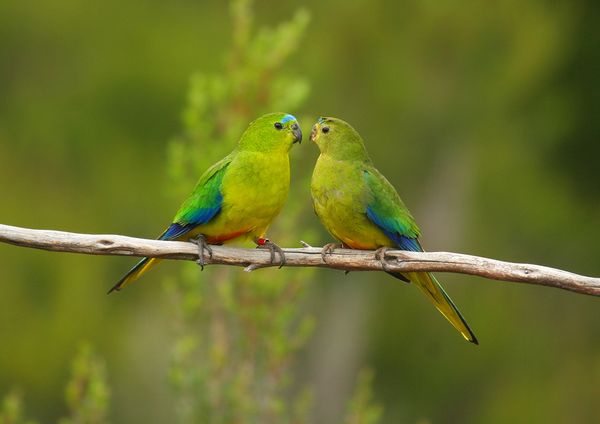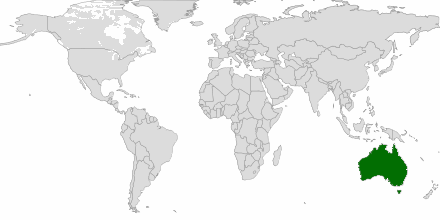The Orange-bellied Parrot is a “grass parrot” found only in South Eastern Australia.
The Scientific Name : Neophema Chrysogaster
Where is it found?
Till 1920s, the Orange-bellied Parrot was wide spread in Australia, hundreds in numbers in the coastal saltmarsh area. It was witnessed throughout Southern Tasmania during summer and during winter from Port Adelaide to Corner Inlet. But due to rapid agriculture expansion, industrialization and residential development, the habitat of the parrot species shrinked sgnificantly in mid 20th century. In 1970s Melaleuca was identified as the only known breeding ground for the species. During winter the birds migrate to Victoria,stopping over on King Island. The adults migrate during February and the juveniles during March-April. The birds migrate back by September to November to Tasmania.
How does it live?
The Orange-bellied Parrots feed primarily on coastal saltmarsh. They are generally found on the ground or in low foliage searching for food. The diet consists of seeds of several sedges, everlasting daisy Helichrysum pumilum and heath plants, including buttongrass. Orange-bellied parrots chose their mate for life. They reach the adulthood within a year. They make Nests within the holes of eucalypt trees that are not higher than 5 meters in height. The female incubates the clutch of four eggs. The lifespan of the species is around 4 years in wild. But in captive they can live longer. The oldest male recorded was 11 years and the oldest female was 10 years in captivity.
How does it look?
The Orange-bellied Parrot is a small parrot species, around 20-25 cm in length and 45-50 grams in weight. The adult male has two-tone blue frontal band, green-blue uppertail with yellow sides and prominent orange patch on belly. The under wing-coverts and flight feathers have royal blue leading edge. Its beak and feet are greyish in colour. The adult female is a dull green with a pale blue frontal band. The juvenile is similar to adult female but with a duller green frontal band.
What are the threats?
The recovery program for Orange-bellied parrot was established as early as 1983, 30 years from now. The recovery team studied and monitored the parrot for decades but unfortunately not able to stop the decline of population of the birds. The main threat for the birds population decline is attributed to loss of habitat specially the over-wintering habitat in the coastal region due to agriculture, industrialization and other human activities since the European settlement in the continent. The new sttlement also brought in new species like sparrows, goldfinches and greenfinches with whom the orange-bellied parrot has had to compete for food, nest etc. Predators such as foxes and feral cats have also taken their toll on the population. Another severe threat to the species is the low breeding productivity observed in recent years. The reason for this is not clearly known but may be due to the loss of high quality saltmarsh. The quality of saltmarsh is specially degraded in the mainland
Conservation Efforts
The Orange-bellied parrot recovery program was first started in 1983. The OBP recovery team has contributed a lot towards studying and conservation of the species over the years. Australian Government has invested millions of dollars in the conservation of the species directly or indirectly. Unfortunately the parrot’s population kept on declining and there is always a need of more fund to protect this beautiful species from extinction. The contribution from Birds Australia and the national/international volunteers not to be forgotten in the efforts of the parrot’s conservation. There are various sides of the total conservation efforts. This includes protecting the saltmarh homes, providing adequate food in the competitive environment, keeping the enemies away and keeping close eye on unexpected events like diseases, natural calamities etc. One major portion of the efforts also go into raising an ‘Insurance’ captive population. The current captive population stable at around 170 birds housed at various sites across Tasmania and mainland. Between 1994 and 2009, around 365 captive birds are released into the wild, unfortunately that couldn’t bring the wild population up.
We need to remember that extinction is irreversible process in science till now. If we lose the Orange-bellied parrot, it will be lost forever!
A small clip on Orange-bellied parrots by ‘Act Wild’




Recent Comments